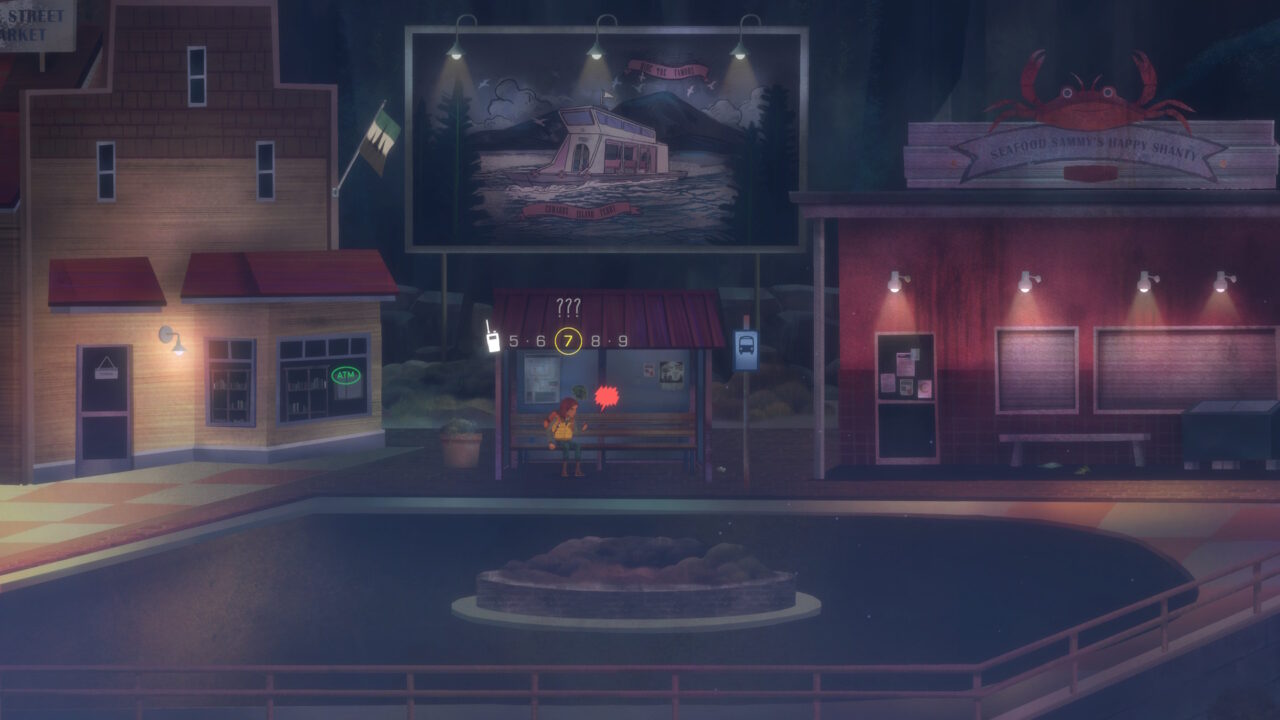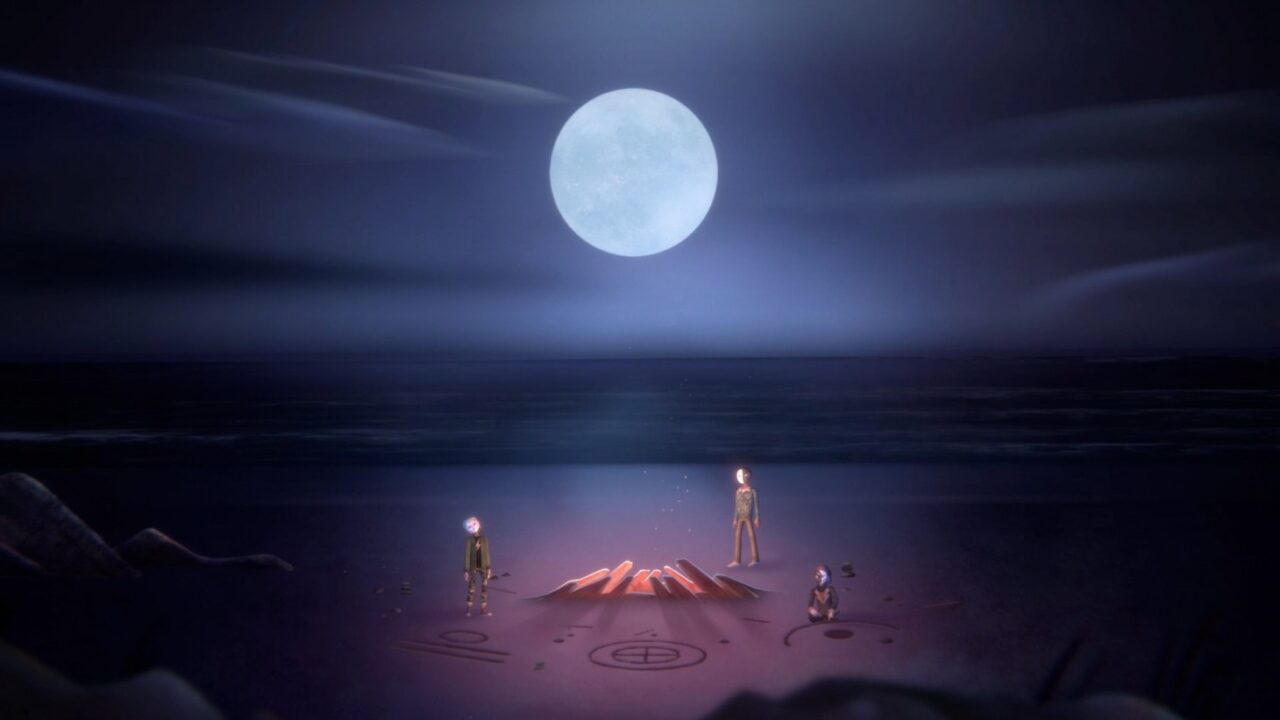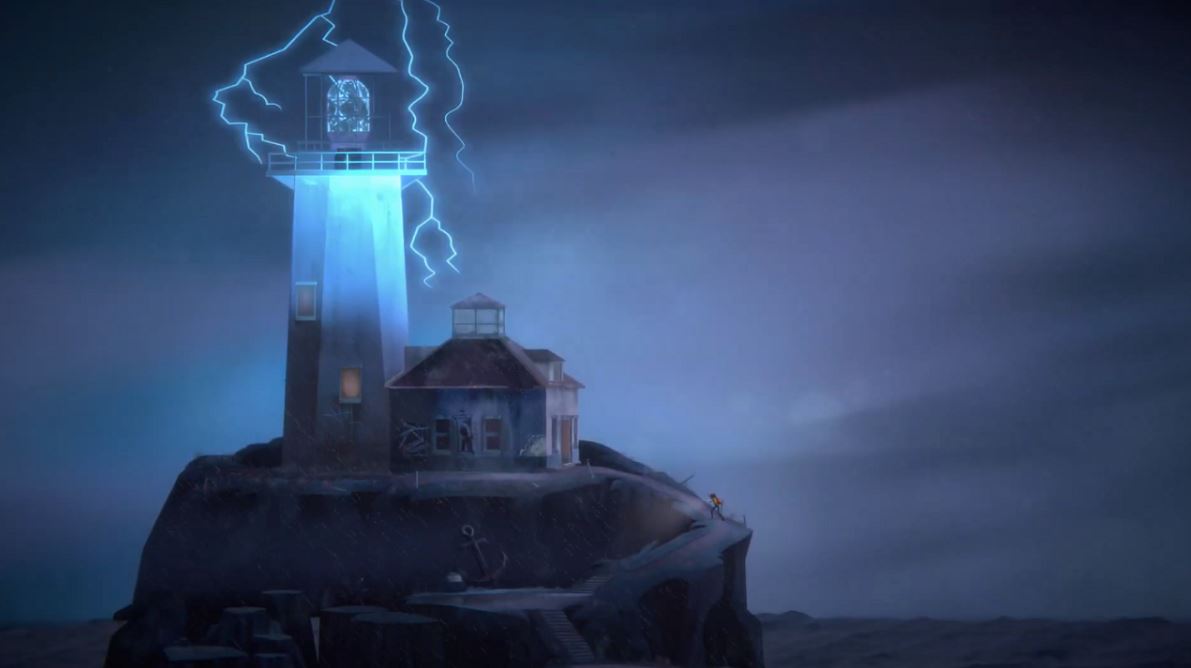Oxenfree II Wants You to Know Your Choices Are Futile (And That’s Great!)

Shifting the world of Oxenfree forward by moving away from the perspective of teenagers and to a pair of adults certainly left me with some hesitancy. The first game had such a particular vibe to it that I struggled to see it translating to the less ‘cool’ world of adults for Oxenfree II: Lost Signals.
Not only was I wrong, I think it’s made for a better game that enhances the original at the same time. It ties itself to the original but spreads its narrative wings to tell something of a subversive story. I do like me a subversive sequel.
Set five years after the first game’s events on Edwards Island, Oxenfree II sees us joining Riley, who is returning home to nearby Camena Coast to study radio anomalies with her freshly-met co-worker Jacob. These two thirty-somethings enjoy some casual (often sardonic) chat as they head toward the first place they need to put a transmitter on for the study. But things take a turn when the transmitter causes a triangular rift to open over Edwards Island and the shenanigans of five years previous return with a vengeance, fuelled by a group of teenagers connected with a cult that worships the anomalies.
That’s the very abridged version of events, but the story takes Riley and Jacob on a journey that opens up old personal wounds, unfurls shock revelations, and pours on a bucketload of existential dread for good measure. With a few tweaks here and there, it still plays like Oxenfree should, but the real change comes from its perspective and twist on story beats.

I will try not to spoil too much here, but it’d be difficult to talk about this without giving away a few secrets so consider this a warning not to read on if you have yet to play Oxenfree II: Lost Signals and want to some time soon.
Still here? Okay, let’s get to it.
The flowing conversation system of the first game is present in Oxenfree II, but it’s smoother and subtler in what it does. Focusing most of the chatter between Riley and Jacob, two adults, is about as big a refresh for the system as you could do without throwing it out and starting over. It’s still quick-witted and easygoing, but there’s an adult kind of petulance and wonder about it. I love the chatter between the kids of Oxenfree, but I’m much more in line with the life and times of Riley and Jacob.
It’s all a bit fluffy to begin with with a side of sour sarcasm that’s made palatable by the concoction. But as we learn more about their lives beyond this strange, supernatural moment, the more they resonate. Riley especially as she’s the focus.
Riley’s ‘problems’ get revealed in stages, with one particular sledgehammer dropping out of nowhere and adding so much more to the context of what we know about her at that point. Again, I don’t want to go too deep into it, but it ends up being a strange remix of Alex’s personal plight in the first game and it ends up clarifying my biggest takeaway from the game.
Choice in games is a futile experience. Oxenfree II addresses this and works that into its storytelling. Yes, you can make small decisions that alter the game experience and ultimately change the outcome come finale time, but they all lead you to the same place. Inevitability and acceptance.

In the vaguest terms possible, Riley’s ordeal with the time fuckery caused by Edwards Island takes her to places in her future and shows her exactly what she needs despite it being a rather bleak outcome for her personally. Riley is a mess of a person on multiple levels, and while that’s shoved to the background in the early going, its ugly head rears itself prominently as the game gets into the thick of it. Night School Studios has the smarts not to milk this personal drama for every award-winning drop. Instead, it’s presented in such a frank, matter-of-fact way it took me by surprise.
The events of Oxenfree II are darker than I’d expected, but they also color the events of the previous game with a gut-punch of a revelation. There’s a cycle at play about grief, futility, and acceptance in both games, but it only gets fully formed for the original in Oxenfree II. In both cases, I can see how it might annoy fans because it robs them of the choices they thought they made, but that’s the thematic point of Oxenfree II. This may well be a game helmed by former Telltale Games talent and yes it features a choice system, but it’s not a choice system designed to offer gutwrenching dilemmas. No, it’s about flavoring your interactions so you understand the inevitability of what must happen. Oxenfree II has more than one possible ending, but what we learn about the events of the first game means you really only have one path when you think about it.

This would be a weakness in most choice-based adventures, but Night School has successfully shrunk the whole point of player choice to make a larger point about how the ultimate choices nearly always need to be painted by logic and reason instead of disconnected whim caused by the realization you’re playing a game.
Make the right choice and the game’s epilogue is a genuinely heartbreaking memory box that is keen to explain that while people may be flawed in many ways, their love and understanding can override that when it matters, even if it’s not readily apparent to the ones it benefits.
It made me think of my own relationships and where I feel I fail at them. I really didn’t expect that from Oxenfree II, but there it was. It showed me the inevitability of where my actions will take them, and on balance, it made me hopeful that my best intentions will outweigh the self-destructive ones when all is said and done. It’s easy to get caught up in what we’re doing wrong with our lives, but when push comes to shove, I’ll bet you find your best self where it matters.
Check out DreadXP for more horror game content!
Categorized:Editorials

